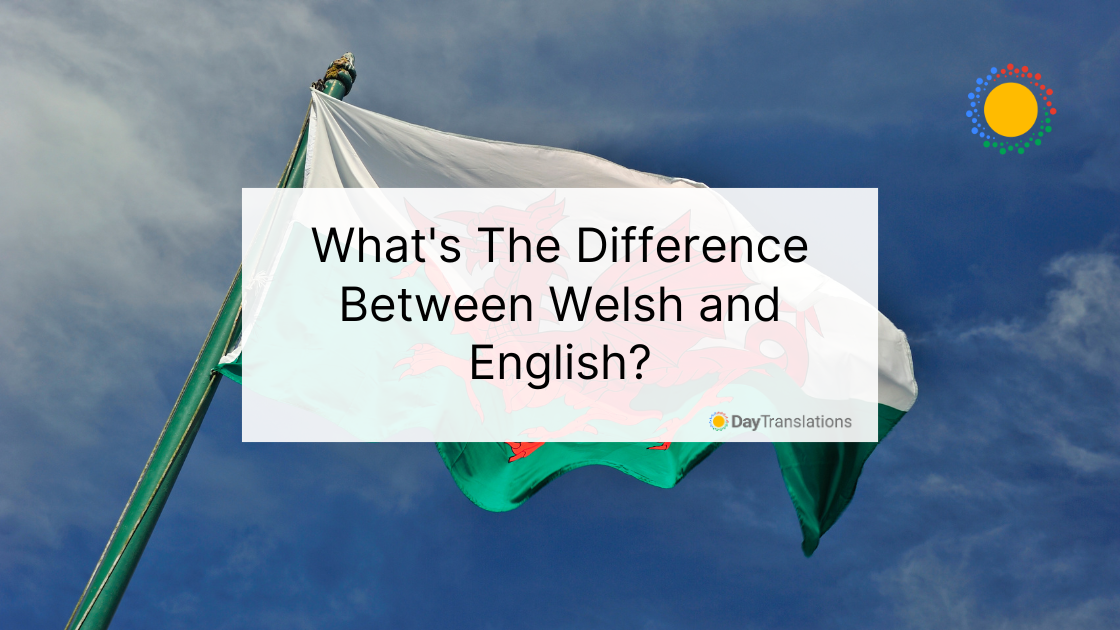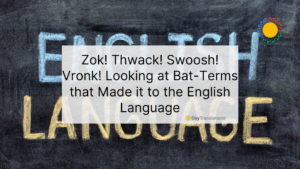English isn’t the only language spoken in the United Kingdom. For instance, estimates suggest that over half a million people in the UK speak Welsh, making it the second most-spoken language in the country. And it doesn’t even share its roots with English. While English is a West Germanic language (like Dutch, Frisian and, of course, German), Welsh is a Celtic language. When we compare the difference between Welsh and English, we’ll find numberless differences in pronunciation, alphabet, syntax and vocabulary.
Let’s take a look at a few examples:
The Difference Between Welsh and English
Different Alphabets
While the English alphabet has 26 letters, its Welsh counterpart has 29, including 8 diagraphs. Diagraphs are pairs of characters that represent a single or several phonemes, but that relate to each other in a way that doesn’t correspond with what we normally understand as combining two characters.
The Welsh diagraphs are: Ch, Dd, Ff, Ng, Ll, Ph, Rh, and Th. These characters are considered as single letters.
Officially, the Welsh alphabet doesn’t have the letters J, K, Q, V, X and Z, but they appear in imported terms when no Welsh alternative is available.
Comparing the Difference Between Welsh and English Vocabularies
Their different roots give Welsh and English little vocabulary in common – but English and Welsh have adopted countless loanwords from each other through the years.
For instance, English acquired “corgi”, “coracle” (the name of a Welsh boat) and “bach” (“small”, in Welsh). On the other hand, among the English words that have entered the Welsh language, we can mention “dawns” (“dance”), “cwestiwn” (“question”), “golff” (“golf”) and “iard” (yard).
Syntax & Grammar
English has an “SVO” (Subject-Verb-Object) sentence structure, while Welsh is a “VSO” language.
There is one occasion in which the “Verb-Subject-Object” structure of Welsh is changed to SVO: when we want to emphasize or refer to someone’s name.
If we try to translate a text literally from Welsh to English, one of the main things we’ll notice is that Welsh, being a Celtic language, doesn’t have possessive verbs. You don’t “have [something]”. Instead, “there is [something] with you”.
Pronunciation
When we compare the difference between Welsh and English pronunciation, we first thing we might notice is that Welsh has no silent characters. Every letter in the Welsh alphabet has a sound that is pronounced by speakers.
On the other hand, English speakers who learn Welsh as a second language often highlight how “straightforward” the phonetic pronunciation of the Welsh language is.
While Welsh and English have very similar alphabets, we shouldn’t make assumptions.
When it comes to diagraphs:
- “Ch” is pronounced like the “ch” in “Bach”.
- “Dd” is pronounced like the “Th” in “Thorn”.
- “Ll” is pronounced as “Thl”.
- “Ff” is pronounced like an “F”.
When it comes to letters:
- “C” is always pronounced like a “K”.
- “G” is always the hard “G” in “Gym”.
- “F” is pronounced like a “V”.
- “W” is pronounced like the “Oo” in “loose”.
- “Y” might be the hardest letter to pronounce correctly, simply because it has might correspond with two different sounds. If it’s anywhere in a word but its last syllable, it’s pronounced as a “U”. If it’s in the last syllable, its pronunciation will be that of the “i” is “is”.
Common History
While Welsh has official status in Welsh (after the Welsh Language Masure of 2011), and it’s the only de jure official second language in the United Kingdom, the pervasiveness of the language was very often threatened.
A decline in the usage of the Welsh language began in the 16th Century. When Wales was annexed to the United Kingdom, parliamentary measures promoted the dominance of the English language. And, during the industrial revolution, the migration of Welsh workers to England further decreased the use of the language. Another factor was the prevalence of English-speaking management in the mining and smelting industries, pillars of the Welsh economy.
Most Welsh people also speak English, giving origin to the Welsh English dialects known as “Wenglish“. The English spoken in the west of Wales has been more heavily influenced by Welsh than its eastern counterpart. But, across groups of speakers, we can notice distinctive syntax and vocabulary borrowed from Welsh. Influenced flowed both ways, with southwestern English accents showing clear paralellisms with Welsh phonetics.
The Difference Between Welsh and English: Conclusions
Due to their different roots, Welsh and English have very basic differences related to vocabulary and grammar. Years of cultural exchange have filled English and Welsh with words borrowed from each other and gave origin to mixtures of Welsh and English, used every day by code-switching Wales natives.
Welsh can be an easier language to learn than English, due to its straight-forward phonetic pronunciation. The greatest challenge posed to learners outside the UK might be a lack of community resources and speaking communities.
Welsh is the most-spoken minority language in the United Kingdom, but its importance shouldn’t be understated. Welsh translation services aren’t as common as those for major languages. But there’s just as necessary. Whether for academics, a Welsh writer wanting to expand abroad, a person of Welsh descent who wants to learn more about their family history, or a business that wants to enter the Welsh market with an advantage over their English-speaking counterparts.











